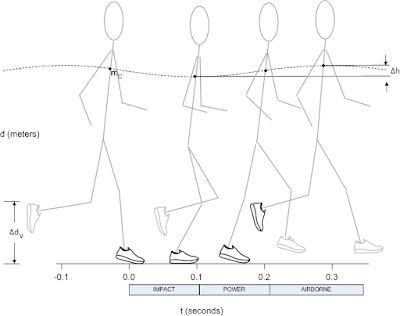Last
week’s mission to get stronger/faster was made possible by this fine venison rump
roast accompanied by apple cranberry orange honey relish, sweet potatoes, and
salad. The rump roast recipe is a combination of my turkey making prowess and roast experience. My wife used her genius and some trial and
error to adapt the scalloped sweet potato recipe from a flour and heavy cream
laden version. This meal is delicious after tearing up muscle all day, leads to a lightning fast recovery, and will have you back at it in no time. Everything is real easy on the stomach as it
is grain and dairy free.
 |
| mmm good, real good. |
If
you did not harvest and butcher a deer and have a full freezer of venison you
can substitute beef bottom or top round.
The top round will be leaner and the bottom round less so. The top round lends itself to under cooking better and makes delicious sliced roast beef.
To make the Venison rump roast:
1 Venison Rump 3 – 5 lb
2 Tbsp Olive Oil
1 Tsp salt
1 Tsp pepper
2-3 strips bacon
¼ - ½ cup Honey
1 -2 Apples coarsely diced
1 Onion coarsely diced
2 cinnamon sticks
1 Cup water
Heat the olive oil in a frying pan. Season the rump with salt and pepper.
Brown the meat on all sides about 2 minutes per side. Place the rump in a
crock pot and drizzle with honey. Place
the bacon strips on top of the rump. To make the aromatics used in this roast add the water,
cinnamon, coarsely diced apple, and onion to the frying pan and bring to a
simmer for 5 minutes. Add the aromatics
to the crock pot. Cook on low for 4-6 hours. Alternatively use
a covered roasting pan and an oven set between 225 - 275˚F. Discard the aromatics when done. Slice and serve with
Cranberry relish (follows).
To make the Cranberry relish mix together:
1 Cup Honeycrisp Apple coarsely diced
1 Cup Cranberries minced
1 Cup Mandarin Orange slices
½ Cup Honey
Adjust ingredient portions and dicing coarseness to
achieve desired balance of ingredients and texture. The cranberry relish
makes up fast. Dice the apples coarsely. Mince the cranberries
finely using a food processor. Mix all the ingredients together and use
immediately or refrigerate for 2 hours for best results. Walnuts would
also make a good addition.
To make the scalloped sweet potatoes:
4 Sweet Potatoes
1 yellow onion diced
4 strips bacon
1¾ cup coconut cream
½ tsp salt
1 yellow onion diced
4 strips bacon
1¾ cup coconut cream
½ tsp salt
½ tsp pepper
Preheat an oven to 375˚F. Bring a pot of water to a boil. Peel and cut the potatoes into 1/4" thick slices. Boil the potatoes for about 8-10min to soften and drain. Make up the bacon strips how you like in a pan and dice when finished. Drain some of the bacon from the pan (or not) and soften the onions for 2 minutes. Add the coconut cream, salt, and pepper and heat on low for 5 additional minutes. Working in layers place the sweet potatoes in an 11x17 pan followed by the onions and cream mixture and diced bacon followed by more sweet potatoes, etc… until ingredients are exhausted. Place the pan in the oven and cook for 20 – 30 minutes until soft. If you would like to brown the top, broil for the last 5min.
Preheat an oven to 375˚F. Bring a pot of water to a boil. Peel and cut the potatoes into 1/4" thick slices. Boil the potatoes for about 8-10min to soften and drain. Make up the bacon strips how you like in a pan and dice when finished. Drain some of the bacon from the pan (or not) and soften the onions for 2 minutes. Add the coconut cream, salt, and pepper and heat on low for 5 additional minutes. Working in layers place the sweet potatoes in an 11x17 pan followed by the onions and cream mixture and diced bacon followed by more sweet potatoes, etc… until ingredients are exhausted. Place the pan in the oven and cook for 20 – 30 minutes until soft. If you would like to brown the top, broil for the last 5min.






















